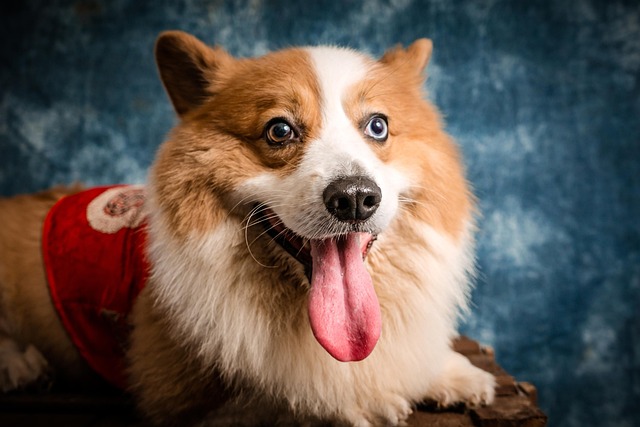
How can I tell if my dog's heatstroke is serious
Let’s be real: It’s a sticky August morning in Los Angeles, and you took your 2-year-old Golden Retriever, Max, for a walk a little later than usual
The best exercise for your dog isn’t one-size-fits-all—it depends on their breed, age, and energy level. A Border Collie might need an hour of intense play to stay calm, while a Pug could thrive on 20-minute strolls. The goal is to tire their body and their brain; a bored dog with pent-up energy is more likely to chew shoes or dig holes, no matter how much you walk them.
Daily walks are non-negotiable, but they’re just the start. Most areas require dogs to be leashed in public spaces, so use that time to make it fun. Change your route occasionally—new smells keep their minds engaged. Let them stop to sniff that fire hydrant or greet a friendly neighbor’s pup. For high-energy breeds, add intervals: walk briskly for 2 minutes, then slow down to let them explore. It turns a routine walk into a mini-adventure.
Fetch works wonders for retrievers and spaniels—those breeds live to chase things. Use a ball, frisbee, or even a favorite stuffed toy, but keep sessions on soft ground like grass or sand. Hard surfaces like concrete can jar their joints, especially for puppies or senior dogs. If your dog loves to jump, try throwing the toy upward instead of far—less running, more vertical movement, and just as tiring.
Swimming is a hidden gem, especially for dogs with joint issues or short legs. It’s low-impact, so it’s easy on hips and knees, but it still gets their heart rate up. Many community pools host “dog swim days” at the end of summer, a fun way to socialize while exercising. If you have a backyard pool, never leave them unsupervised—even strong swimmers can tire quickly. And always rinse them off afterward to remove chlorine or salt, which can irritate their skin.
 Mental exercise counts too. Puzzle toys that dispense treats keep them busy for hours—think Kongs stuffed with peanut butter or snuffle mats where they “hunt” for kibble. Hide and seek works great too: toss treats around the yard and let them root them out. Training sessions—even 5 minutes of practicing “sit,” “stay,” or “spin”—tire their brains as much as a long walk. Smart breeds like Poodles or Australian Shepherds crave this kind of challenge.
Mental exercise counts too. Puzzle toys that dispense treats keep them busy for hours—think Kongs stuffed with peanut butter or snuffle mats where they “hunt” for kibble. Hide and seek works great too: toss treats around the yard and let them root them out. Training sessions—even 5 minutes of practicing “sit,” “stay,” or “spin”—tire their brains as much as a long walk. Smart breeds like Poodles or Australian Shepherds crave this kind of challenge.
Playdates with other dogs turn exercise into a party. Many parks have designated off-leash areas, but check local rules first—some require proof of vaccinations or limit hours. Watching dogs chase each other or wrestle is not only entertaining; it teaches them social skills. Just keep an eye on the group—if play gets too rough, call your dog over for a break. Not all dogs love crowds, so respect their comfort level.
Senior dogs need gentle movement to stay mobile. Short, frequent walks are better than one long trek—their joints can’t handle as much strain. Try slow-paced games like rolling a ball a few feet and letting them fetch it at their own speed. Massage their legs afterward to ease stiffness; most older dogs love the extra attention. If they struggle with stairs, avoid hilly routes—flat paths are easier on their hips and backs.
Avoid extreme weather whenever possible. On hot days, walk early or late to beat the heat—paws burn quickly on hot pavement. In cold climates, protect short-haired breeds with a sweater, and wipe their paws after walks to remove salt or ice melt, which can be toxic if licked. Some areas ban outdoor exercise during heatwaves or blizzards for animal welfare, so check local alerts before heading out.
At the end of the day, it’s about finding what your dog loves. If they drag their feet on walks but go crazy for tug-of-war, do more of that. If they ignore toys but light up at the sight of a bike, try jogging beside you. Exercise isn’t a chore—it’s bonding time. When they collapse on the couch afterward, tail still thumping, you’ll know you’ve done it right.

Let’s be real: It’s a sticky August morning in Los Angeles, and you took your 2-year-old Golden Retriever, Max, for a walk a little later than usual

You're enjoying a summer afternoon at the park when you notice your dog has stopped panting and appears disoriented - their gums are bright red

Let’s paint the picture: You’re in your Denver apartment, watching your 4-year-old Boston Terrier, Ruby, plop down mid-play session with her favorite toy

Many dog owners notice their pets nails seem shorter after regular walks,but how much does this daily activity actually help?The answer depends on where you walk—concrete sidewalks or asphalt streets gently file nails as a dog's paws hit the ground

Most dog owners notice their pup scooting across the carpet at some point, but few connect it to impacted anal glands. These small sacs near a dog’s rectum secrete a scent for marking territory

Most vets agree that regular dog teeth cleaning is key to avoiding painful dental issues later. For healthy adult dogs, a professional cleaning at the vet’s office every 12 to 18 months usually works well.